Should You Add a Photo to Your Resume in 2026? The Ultimate Guide
Updated on 12/10/2025

You’re preparing your job application.
You know hiring managers will scrutinize your resume, so you put in hours of hard work to make everything look polished.
One thing is left: should you include a photo on your resume?
The internet is full of contradictory advice - some say it’s good to include a photo, others say it’s taboo altogether.
So, what’s the truth?
In this article, we’re going to cover:
- When to Include a Photo on Your Resume
- 8 Tips for Including a Photo on Your Resume
- 6 Resume Photo Examples
…and more!
Let’s dive in.

Want to create your resume fast and hassle-free? Use one of our templates!
They're designed to impress any hiring manager and let you add or remove a photo easily.
Should You Include a Photo on Your Resume?
There’s a lot of confusion around adding photos to your resume or CV (you may call it a CV, depending on where you’re based).
The main thing to consider is the country where you’re applying to work.
Like everything else, the cultural and social rules surrounding resumes and job applications vary from country to country. So, you need to know those specifics to navigate that job market effectively.
Thankfully, you don’t need to guess to guess because we’re here to break it down for you.
💡
Quick Tip
Are you getting started with your resume? Read our detailed guide on how to make a resume to save time and effort!
When You Shouldn’t Include a Photo
There are a few countries where it’s taboo and even illegal to include a photo with your job application. There, your resume might be disqualified altogether if you do include it.
These countries are:
- The United States of America. Because of the Equal Employment Opportunity Commission (EEOC) regulations, a photo on a resume can be seen as leading to potential discrimination based on race, gender, or ethnicity. Photos aren’t encouraged, and many companies avoid them for compliance reasons.
- Canada. Canadian Human Rights legislation prohibits employers from asking for a photo as part of a job application since this can lead to discrimination. The law encourages anonymous hiring processes so if you’re living there, don’t add it.
- The United Kingdom. Photos are forbidden on job applications in the UK. The Equality Act 2010 mandates that employers avoid any potential discrimination in the hiring process, including information about your age or marital status.
Other countries don’t have legislation that outright bans photos on resumes but the practice is strongly discouraged. These include:
- Ireland
- Australia
- New Zealand
- South Africa
You might notice a pattern here - most English-speaking countries are strict about not adding photos to resumes, and some have strict anti-discrimination laws forbidding it.
So, what about elsewhere in the world?
The job market is very dynamic everywhere and legislation changes over the years. In fact, in most countries, it was expected to include a photo on your resume until recently.
Here are some countries where this is currently shifting:
- Germany
- France
- Sweden
- The Netherlands
- Singapore
- South Korea
Overall, these countries aim to remove personal information that could lead to unconscious or overt bias during the hiring process, so including a photo in your resume could become a legal issue for the company you’re applying to.
💡
Quick Tip
There are some exceptions to the rule. For example, if you’re applying for a job as a model or an actor, then a photo will be expected in any country because the job is directly linked to your appearance.
When You Should Include a Photo
So, when (and where!) should you include a photo with your job application?
The answer is pretty much everywhere else.
Just like how most of the world calls it a CV instead of a resume, the same way they expect to see a picture of you in the top corner of the document.
To clarify, you should always add a photo on your resume when applying for a job in:
- Europe: Switzerland, Italy, Austria, Belgium, Spain, Denmark, Latvia
- Asia: China, the Philippines, Malaysia, India, Thailand, Vietnam
- Africa: Algeria, Egypt, Rwanda, Uganda, Mozambique, Ghana
- The Americas: Guatemala, Argentina, Ecuador, Colombia
Once again, there are some exceptions to the rule.
For instance, in countries including Chile, Uruguay, and Armenia, you can add a photo to your resume, but many people choose not to.
You should also keep in mind that if you’re applying for a job in a foreign company, they might retain the CV requirements from their native country, not the country you’re applying in.
For example, if you live in India, it’s common to include a photo in your CV. But if you are applying to an India-based UK company, you might have to stick to the origin country’s CV requirements, which means no photos or unnecessary personal information.
Still Not Sure If You Should Include a Photo?
There are more than 190 countries in the world, so we didn’t research the ins and outs of job applications for all of them.
However, most of these countries do have some things in common and that’s the industries and occupations that they hire for.
In countries where including a photo is acceptable, customer-facing roles such as receptionist or server might require a picture of you.
On the other hand, if you’re looking to get into engineering or law, a photo will be far less important than your work experience or skills.
So, if you’re not sure if adding a photo is okay, we recommend skipping it. In the end, if it’s that important to the hiring process, the employer will outright request it, so you’ll know.
💡
Quick Tip
Your work experience is one of the most important sections of your CV or resume. Learn how to perfect it with our guide!
8 Tips for Adding a Photo to Your Resume
If you’re going to add a photo to your resume, it better be a good one! So, just follow these tips to help you make a great first impression:
5 Resume Photo Tips to Apply
- Dress according to the role. Make sure the company’s culture is reflected in your picture. If you’re applying for a job as an investment banker, put on a suit. Similarly, if you’re going to be in a business casual environment, a good T-shirt is enough.
- Consider hiring a photographer. Using a professional photo goes a long way and it’s not as expensive as you might think.
- Match it to your LinkedIn photo. This way, if employers look at your resume and then go to your LinkedIn profile, they might recognize your personal brand immediately.
- Keep it relevant. Your photo should reflect how you look now, not how great you looked that one time five years ago.
- Crop the photo. If you do include a photo on your resume, it should always be a headshot. Full-body photos might be necessary on the side if you’re an actor or other entertainer, but when it comes to resumes, everyone is equal. Your face should take up more than half of your photo, with the top of your shoulders and the space just above your head framing the center of the picture.
3 Resume Photo Mistakes to Avoid
- Using a selfie. Even the best phone cameras look unprofessional from your favorite selfie angle. If you don’t have a proper camera, at least ask a friend to help take your picture.
- Causing a distraction. The hiring manager should be focusing on your most important skills and experience, not on what you look like. Avoid extravagant hairstyles, makeup, or fashion statements.
- Oversizing your photo. Your photo shouldn’t be center-stage, especially when you’re trying to keep your resume to a certain length. A small, passport-sized photo in the top right or left corner is more than enough.
Examples of Resume Photos
Now it’s time to look at examples of which photos should (and which photos should never) be included on your resume.
Generally, good examples are photos where:
- You’re alone in the picture.
- You’re facing the camera.
- Your face isn’t obscured by glasses, shadows, or hair.
- You have a neutral or friendly expression.
- Your backdrop is a plain or blurred background.
- The picture doesn’t include any filters or distortion.
If your photo doesn’t follow the outlined steps above, either take a new one or submit your resume without it.
Good Examples of Photos for Your Resume

Bad Examples of Photos for Your Resume

If you don’t have a professional-quality headshot already, consider using a specialized service rather than trying a selfie or poorly lit snapshot. For a polished, business-appropriate photo you can pair with your resume, take a look at headshot retouching services offered by headshot retouching services, a good way to make sure your image looks clean, well-lit and appropriately cropped before you attach it.
6 Examples of Resumes With and Without Photos
Now that you know what the ideal resume photo looks like, let’s talk about what the resume should look like.
Check out these resumes with and without photos:
#1. Skill-Based Resume With Photo
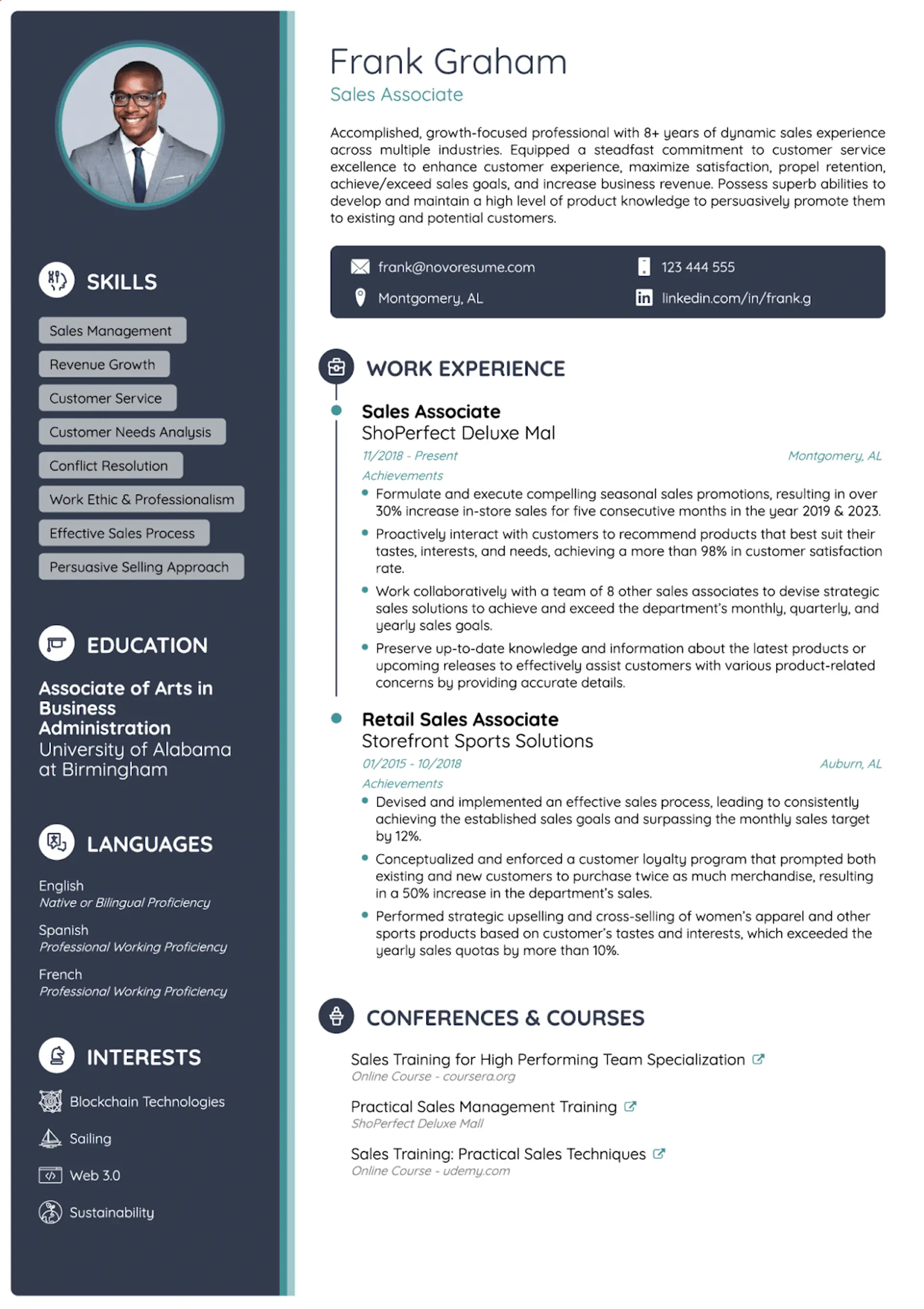
#2. Skill-Based Resume Without Photo
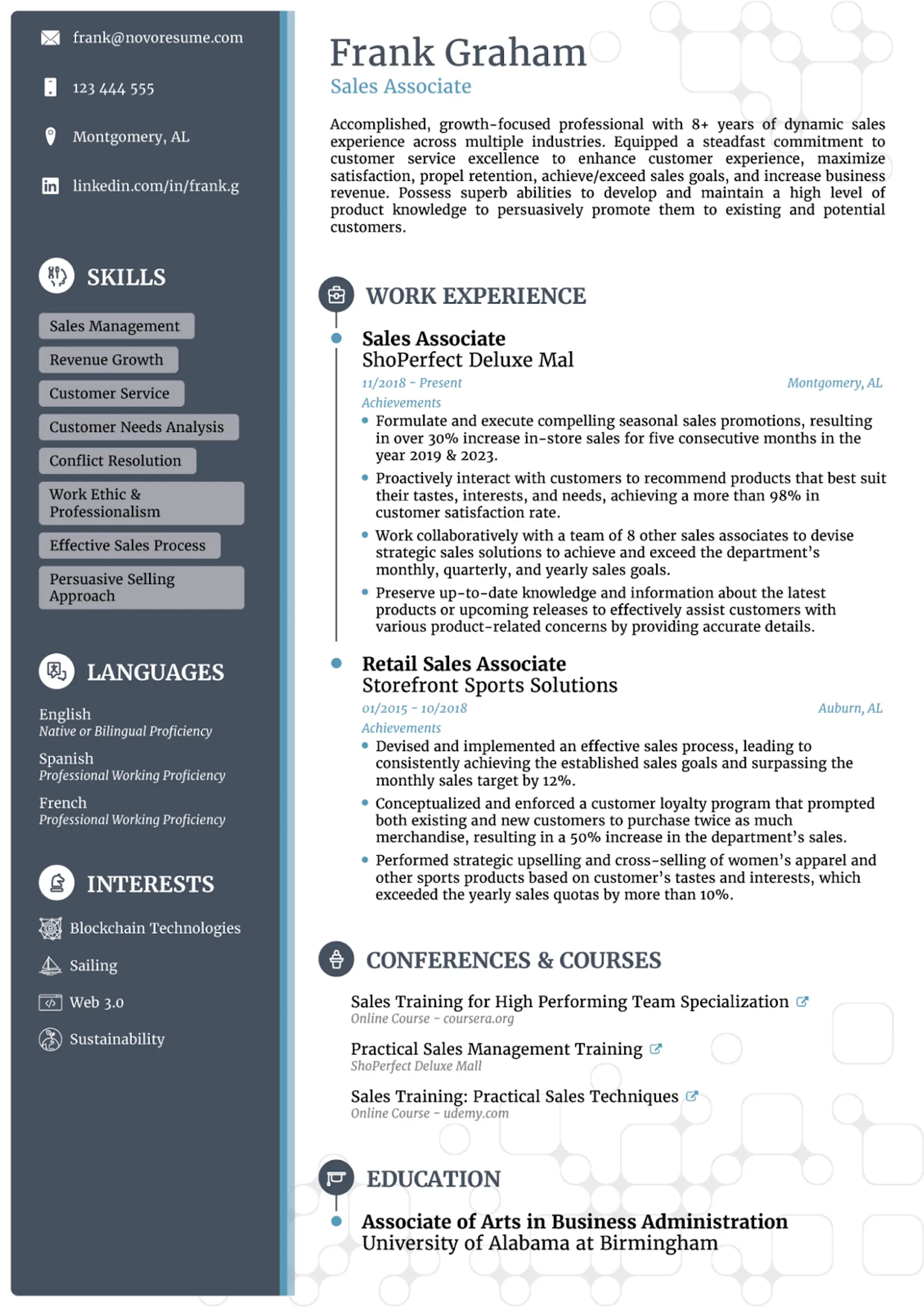
#3. Minimalist Resume With Photo
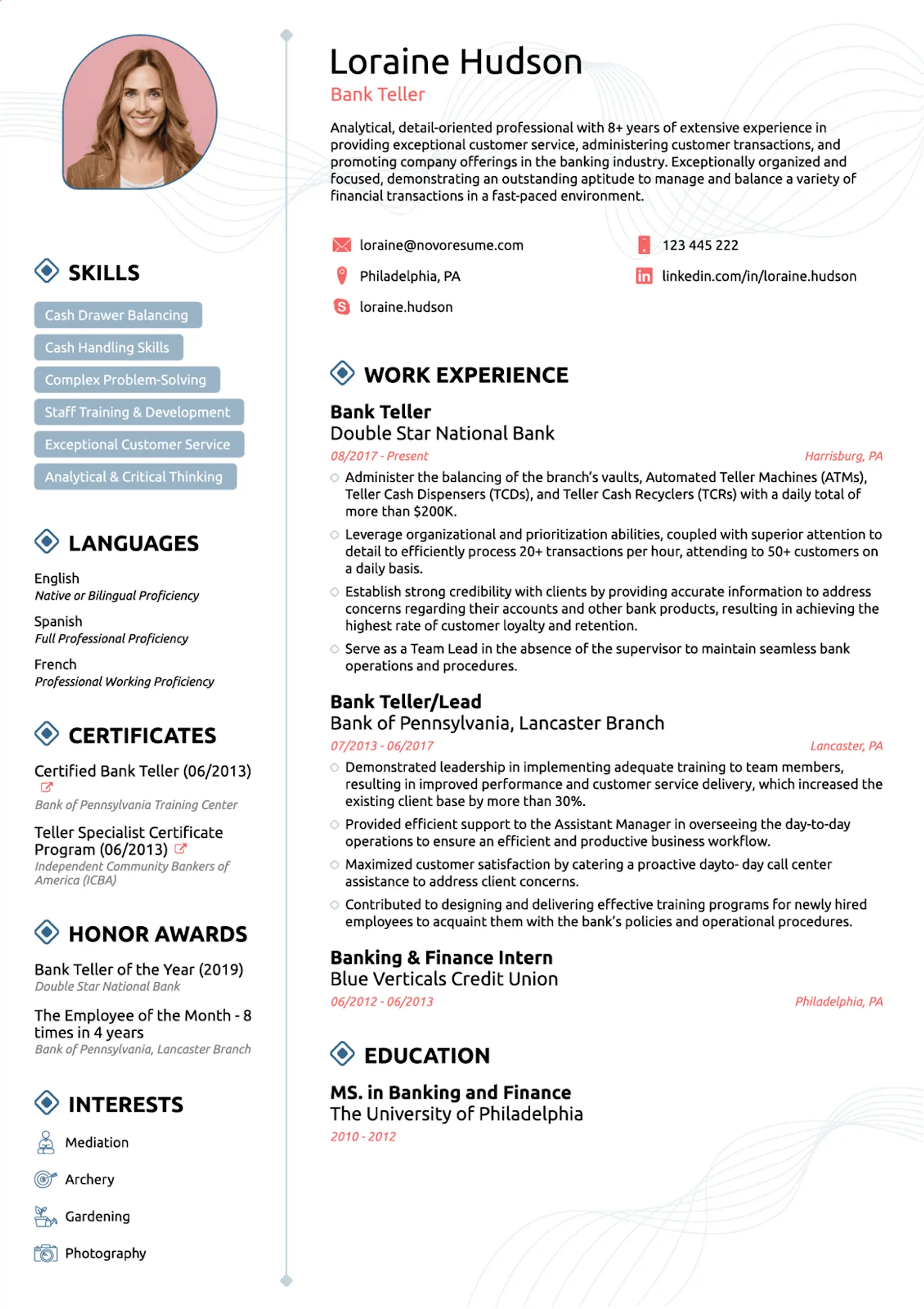
#4. Minimalist Resume Without Photo
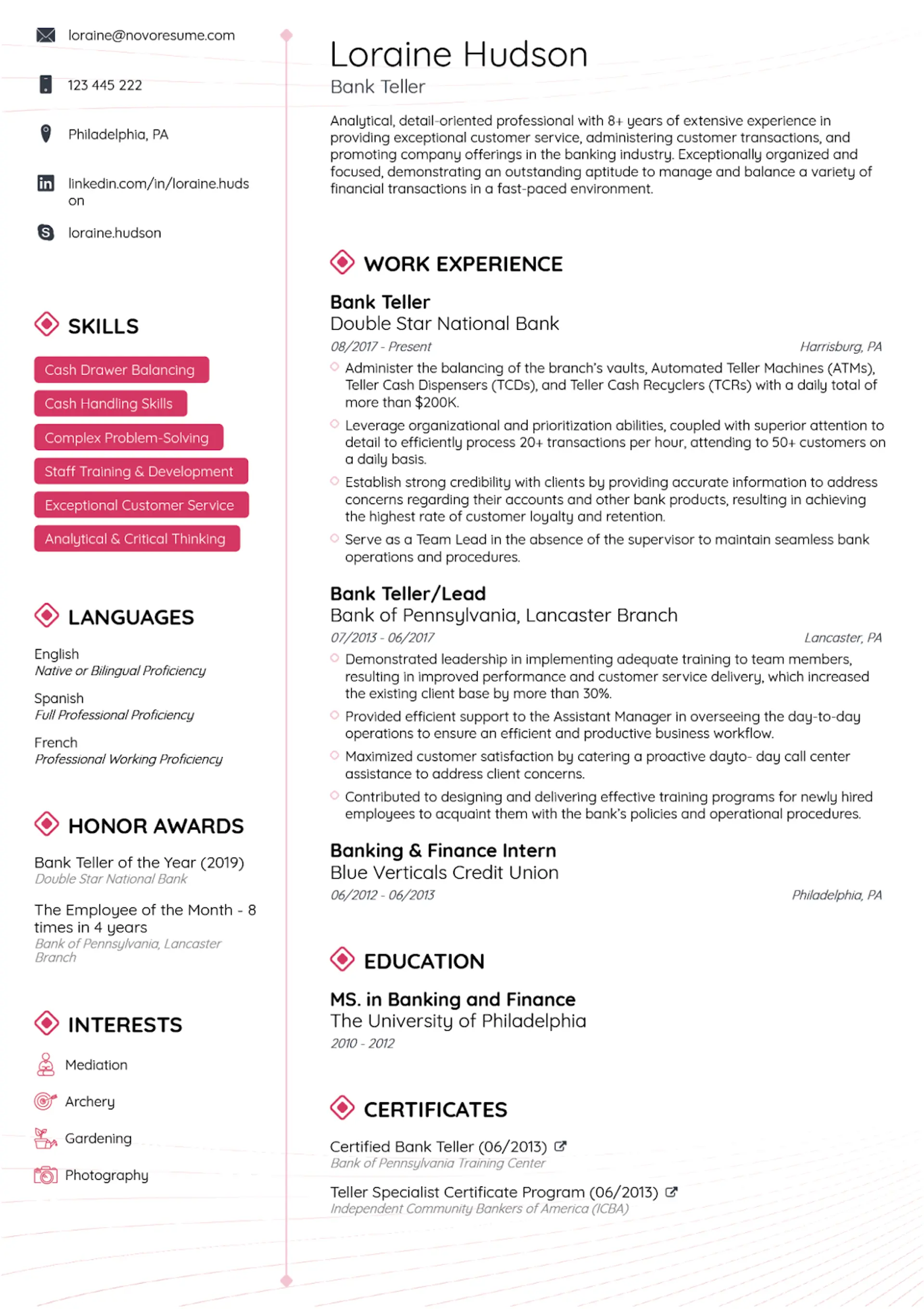
#5. Traditional Resume With Photo
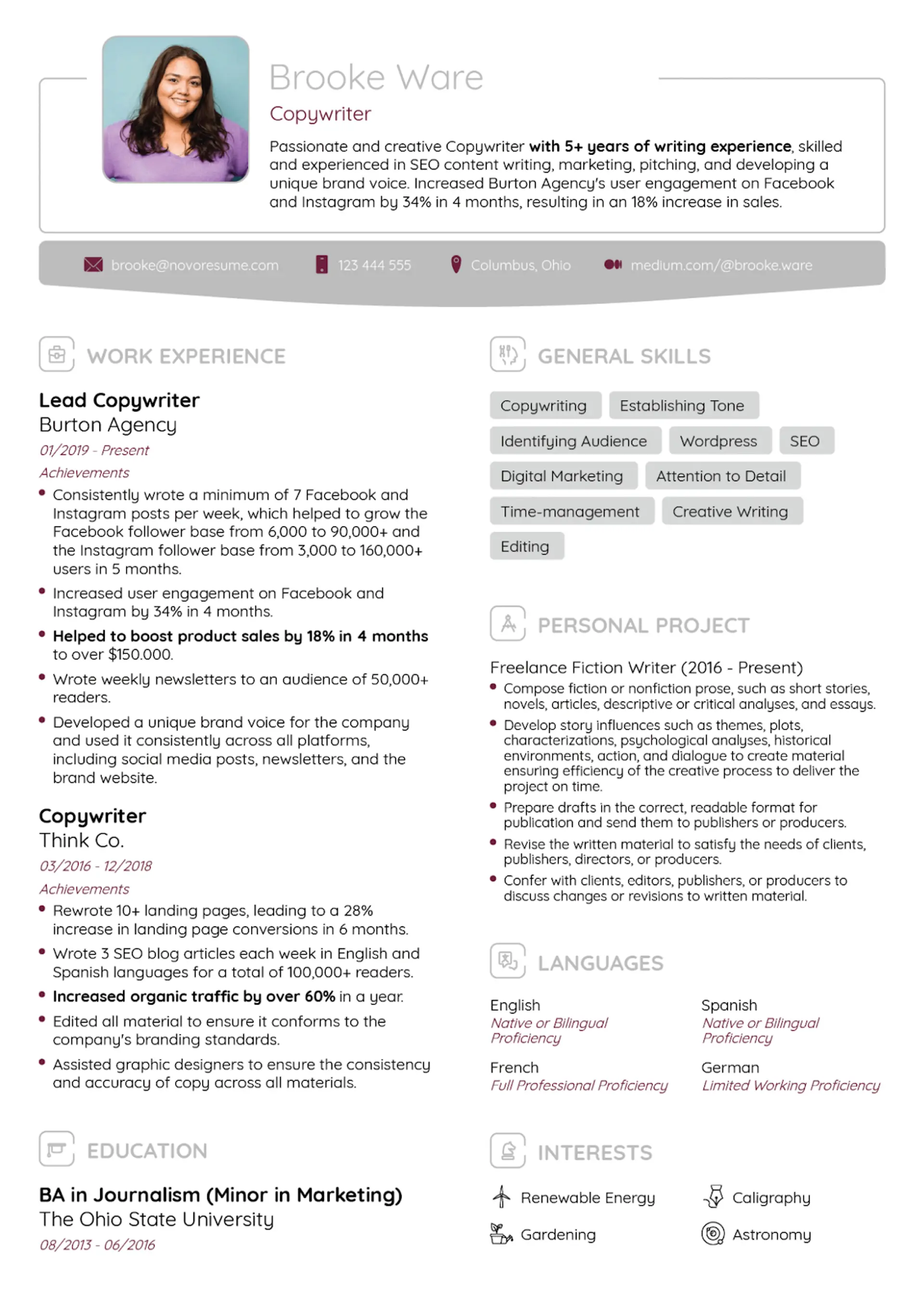
#6. Traditional Resume Without Photo
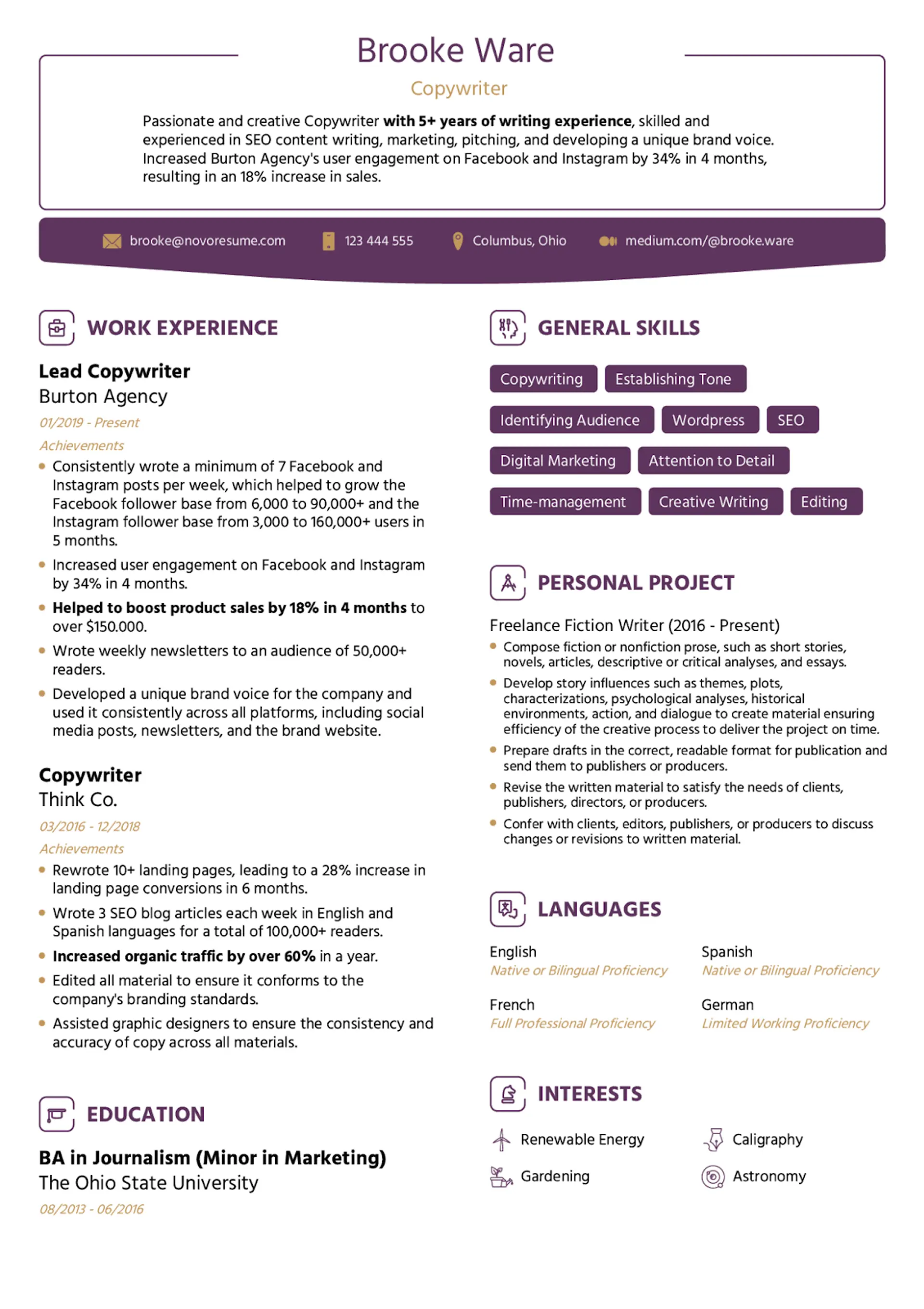
💡
Quick Tip
Need more inspiration? Check out our resume examples article for more!
FAQs on Including a Photo on a Resume
Are you still unsure whether to include a photo on your resume? Just check out the answers to some of the most frequently asked questions here:
Key Takeaways
And that’s all there is to know about including a photo on your resume!
By now, we’re sure you’ve got this.
But just in case, before we part ways, let’s recap what we talked about:
- Whether or not you should add a photo to your resume depends on local legislation and cultural norms. This is going to be different for every country, so do your research before you submit your application.
- While some countries like France, Germany, and South Korea, among others, used to require photos in job applications, there is a trend of this changing. You might find conflicting information about this online, so do extra research about each company and/or industry you might apply to in any of these countries.
- Across most of the world, it’s still the norm to include a photo in your resume. But that photo should make a fantastic first impression, so make sure you do it right!
- A professional photo on your resume should focus on your face in full view, with no filters, harsh shadows, or distracting backgrounds.
- If you’re not 100% sure whether you should add a photo to your resume, it’s always best to err on the side of caution and skip it.
